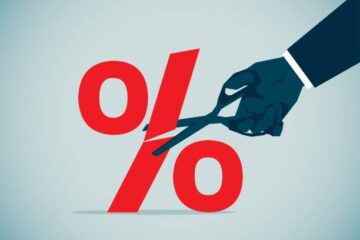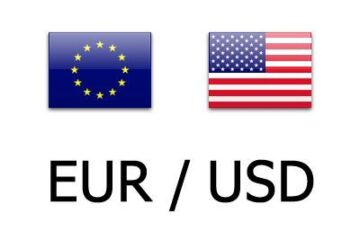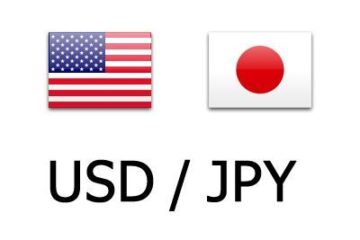On the evening of August 12, Tesla (TSLA) CEO and X (formerly known as Twitter) owner Elon Musk hosted a nearly two-hour long “conversation” with former U.S. President and Republican presidential nominee Donald J. Trump on his social media platform.
The eclectic duo discussed a wide range of political topics, including his failed assassination attempt, immigration, and electric vehicles, but one particular exchange raised some eyebrows.
Related: Trump and Musk’s union-busting joke wasn’t funny to the UAW
In the heat of a passionate discussion, Musk proposed a particular idea.
“I think we need a government efficiency commission to say like, ‘Hey, where are we spending money that’s sensible. Where is it not sensible?’” Musk suggested. “We need to live within our means.”
What was once a suggestion may become a reality if Trump is elected.
Elon in the House
During a speech at the Economic Club of New York on September 5, the former President and current Republican Presidential candidate followed up on Musk’s promise and made it a campaign promise of his own.
“At the suggestion of Elon Musk, who has given me his complete and total endorsement […] I will create a government efficiency commission tasked with conducting a complete financial and performance audit of the entire federal government and making recommendations for drastic reforms,” Trump said. “We need to do it. Can’t go on the way we are now.”
Trump noted that such a commission would be in charge of an “action plan to totally eliminate fraud and improper payments within six months” and that it would save the country “trillions of dollars.”
The “Musk commission” was just one of many tidbits in a speech that largely touched on Trump’s economic policy.
Besides talking at length about tariffs and cryptocurrency, he also outlined proposals that include reducing the corporate tax rate from 21% to 15% on companies that make their products in the country and relaxing government regulations, including those regarding energy production.
Elon Musk listens to then-President Donald Trump at a meeting with business leaders at the White House on Monday, January 23, 2017 in Washington, DC.
The Washington Post/Getty Images
A Company Man
Though Trump and Musk exchanged giggles and praise during their time together, the way Elon has impacted the companies he has been involved in is no laughing matter, as his leadership style and attitude make quite the impact.
Take Tesla as an example; it is no secret that Elon Musk sees Tesla as more than just a car company. During Tesla’s second-quarter earnings call, the CEO reiterated that the company “should be thought of as an AI robotics company.”
“The value of Tesla overwhelmingly is autonomy. These other things are, I think, no way it’s relative to autonomy,” he said.
“I recommend anyone who doesn’t believe that Tesla would sell vehicle autonomy should not hold Tesla stock. They should sell their Tesla stock. If you believe Tesla will sell autonomy, you should buy Tesla stock. And all these other questions are in the noise.”
The landmark Tesla product that Musk sees as its AI-powered Northstar is its misleadingly named “Full Self-Driving,” a software product offered in Tesla cars that it sees as the lifeblood of its future robotaxis. However, the hype behind the tech does not match real life.
Related: Tesla tech beloved by investors seems to work for a select few
Tesla is currently the subject of an investigation led by U.S. prosecutors into whether the electric automaker committed securities or wire fraud by misleading its customers and investors about the actual capabilities of its Autopilot feature.
However, in a July 2024 report, sources within Tesla revealed that the company manipulated the effectiveness of Full Self-Driving and Autopilot to work much more effectively with Musk and a cohort of other Musk-friendly influencers behind the wheel; leading them to believe that the system is virtually flawless.
The same month, an examination of more than 200 crashes involving Teslas equipped with Autopilot and FSD by The Wall Street Journal found that these crashes were caused by Tesla’s overreliance on cameras and machine learning software.
More Business of EVs:
Waymo finds new way to bring chaos to quiet city streetsGavin Newsom’s ‘EV mandate’ is under U.S. Supreme Court threatBMW’s clever, new EV app is a privacy nightmare
Though Tesla data experts train the cameras to spot objects like road signs, stopped cars, trucks, or animals, the major gaps where the software doesn’t know the objects can put people in dangerous situations.
“The kind of things that tend to go wrong with these systems are things like it was not trained on the pictures of an over-turned double trailer – it just didn’t know what it was,” Phil Koopman, associate professor of electrical and computer engineering at Carnegie Mellon University, told the Journal.
“A person would have clearly said ‘something big is in the middle of the road,’ but the way machine learning works is it trains on a bunch of examples. If it encounters something it doesn’t have a bunch of examples for, it may have no idea what’s going on.”
Other autonomous driving systems, such as Waymo’s, use LiDAR and radar sensors to scan the road ahead, even in dark, foggy, rainy, or other conditions that can blind a camera. However, Elon Musk has said that fitting such sensors is “unnecessary” and that installing LiDAR on its cars would be like fitting it with a “whole bunch of expensive appendices.”
Related: Analyst tries Tesla FSD again; others mull troubled EV startup
However, the decision to save money is reflected in the real world, with real people. Sometimes, those people are the kind you do not want to put in a potentially dangerous situation.
On two separate occasions, Truist Securities Analyst William Stein put himself in the “driver’s seat” to try Tesla’s Full-Self Driving for himself.
In a note published on July 29, the analyst wrote that a special “Demo” mode of FSD, made the Tesla Model Y he and his teenage son rode in made a number of illegal and dangerous moves that “would have surely caused an accident.”
He said that the car “accelerated through an intersection as the car in front of us had only partly completed a right-turn,” adding, “My quick intervention was absolutely required to avoid an otherwise certain accident.”
When Tesla released a new version of Full-Self Driving software, he and his son tried it again, which left his 16-year-old son “terrified.”
He called it a “fast fail,” adding that it committed egregious driving infractions such as making a left turn from a non-turning lane. At the same time, the traffic light was red and veering into the middle of two lanes on a twisty road, adding that FSD at its current state is far from what Musk calls “solving autonomy” or having something capable of being used in a robotaxi.
The Principle
In an appearance on Bloomberg Technology on August 15, Stein emphasized that the largest driver of Tesla’s stock price is FSD, the upcoming robotaxi, and other AI projects.
“Well, I think the idea that FSD needs to work is critical to the stock, in my opinion. Only about a third of the stock’s value is wrapped up in the automotive production and energy capture and storage businesses. About two-thirds of the stock are wrapped up in these AI projects,” Stein told Bloomberg Technology.
“So he’s got to show something at this Robotaxi day. He’s already pushed out that day from August to October. But if we have the supposition that Robotaxi will depend on FSD, then it’s not ready.”
With the election nearly two months away and Tesla’s hotly anticipated robotaxi event on October 10, time will tell if Elon Musk’s attitude is worthy of a White House appointment.
Related: Veteran fund manager sees world of pain coming for stocks


